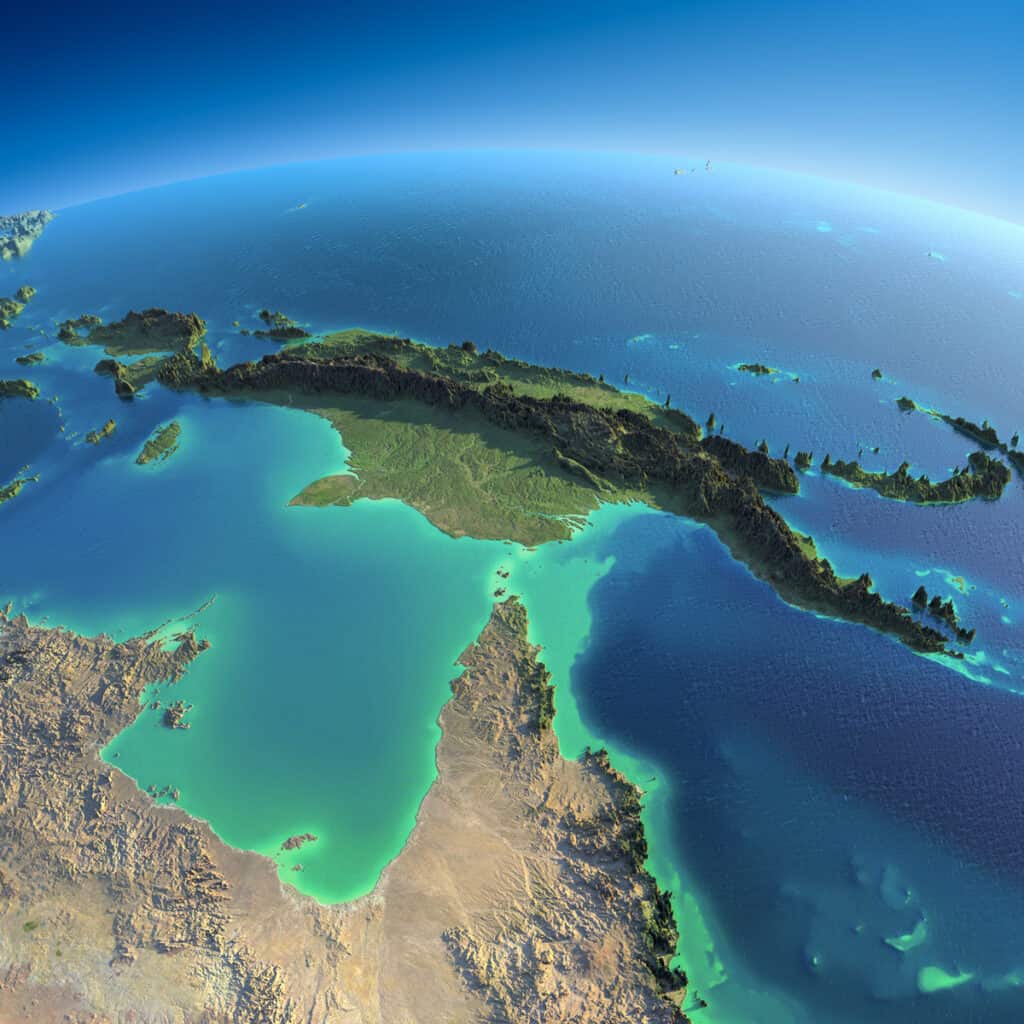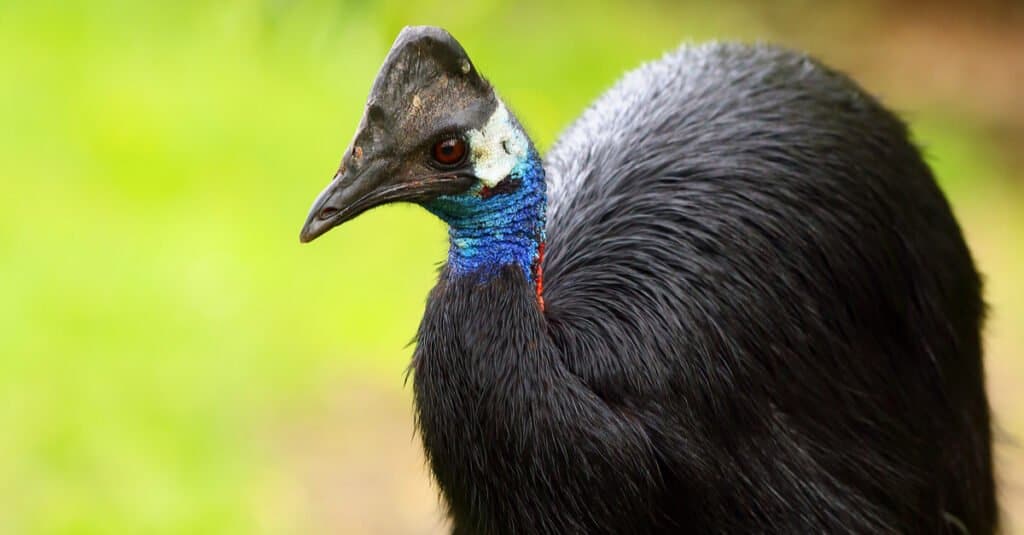Cassowaries live in three locations: Australia, Indonesian islands, and the island of New Guinea. Yet, each of those locations covers a significant amount of land!
Let’s examine the three species of cassowaries and the habitats and locations they can be found in!
Where Do Cassowaries Live: Their Habitats

Cassowaries are one of the most unique looking species on Earth
©Sardo Michael/Shutterstock.com
The first thing to know about cassowaries is that their habitat differs from other large, flightless birds like ostriches that live in savannas or desert-like conditions.
Cassowaries eat an extremely fruit heavy diet, so they in rainforests where fruit along the ground is plentiful. Occasionally cassowaries can be found in other habitats such as bog, grasslands, or even beaches, but this is normally only for brief periods when they’re traveling to new forest locations.
There are actually three different cassowary species, so we’ll identify individually where each one lives.
Southern Cassowary: Lives in Australia and Southern New Guinea
Southern cassowaries are the most common cassowary species. IUCN estimates place their population at between 20,000 to 50,000 birds.

A map of
Australia
where each red dot shows a cassowary population center
©Schwabenblitz/Shutterstock.com
Southern cassowaries are the only species that lives in Australia. Their Australian range is limited, and consists of only three separate populations on the the Cape York peninsula. The map above shows where southern cassowaries live, with their largest center around the city of Cairns.
Southern cassowaries also live on the southern half of the island of New Guinea. They prefer lowland habitats, rarely ranging above an elevation of 3,000 feet. Their range extends across the entire southern coastline of the island and they’ll live inland up until the Central Range of mountains that run through the middle of New Guinea.
Northern Cassowary: Lives in Northern New Guinea

An exaggerated relief map of New Guinea. Southern cassowaries live cross the plains on the south half of the island while northern cassowaries live predominately on the northern shore
©Anton Balazh/Shutterstock.com
Northern cassowaries have a smaller range than their southern neighbors. The species’ ranges do overlap in some spaces, such as the west coast of New Guinea, but the northern side of the island has less lowland space to populate.
Due to less range, its estimated there are about 10,000 to 20,000 northern cassowaries, which is half the population of the southern species.
Dwarf Cassowary: Lives in the Mountains of New Guinea

The dwarf cassowary is the smallest species
©Karel Bartik/Shutterstock.com
Dwarf cassowaries are only about half the size of the other two species and live in the mountains of New Guinea. They have been observed living in locations that are nearly 12,000 feet in elevation and avoid lowland habitats. Due to this preference for New Guinea’s highlands, dwarf cassowaries mostly live across the center of the island.
It is estimated that the dwarf cassowary can live up to 12 to 19 years in the wild. While all bird species are closely related to the to dinosaurs, cassowaries really look the part. All species have a striking similarity to emus and ostriches, but cassowaries are dangerous and do not make good family pets.
In addition, dwarf cassowary populations live on some surrounding islands, such as Yapen Island.
Next Up…
- Bird Teeth: Do Birds Have Teeth? – Do any species of birds have teeth? Click here to find out!
- 5 Birds That Lay Eggs in Other Birds’ Nests – Click here to learn what birds lay eggs in other bird’s nest! The facts may surprise you!
- Bird Lifespan: How Long Do Birds Live? – Keep reading to learn more about how long birds can live for!
The photo featured at the top of this post is © Karel Bartik/Shutterstock.com
Thank you for reading! Have some feedback for us? Contact the AZ Animals editorial team.






